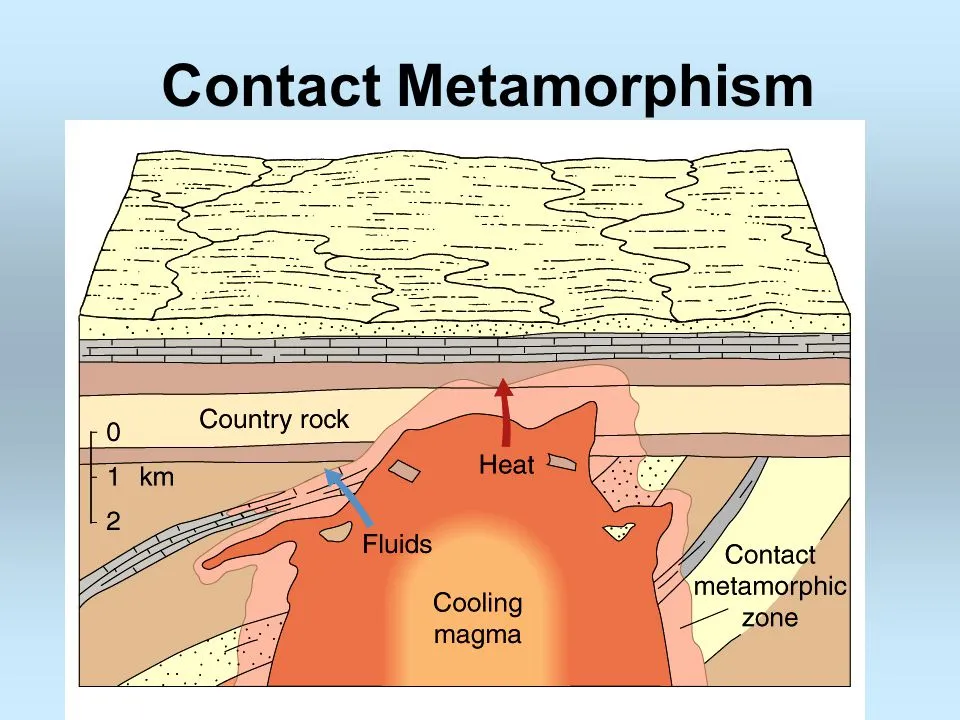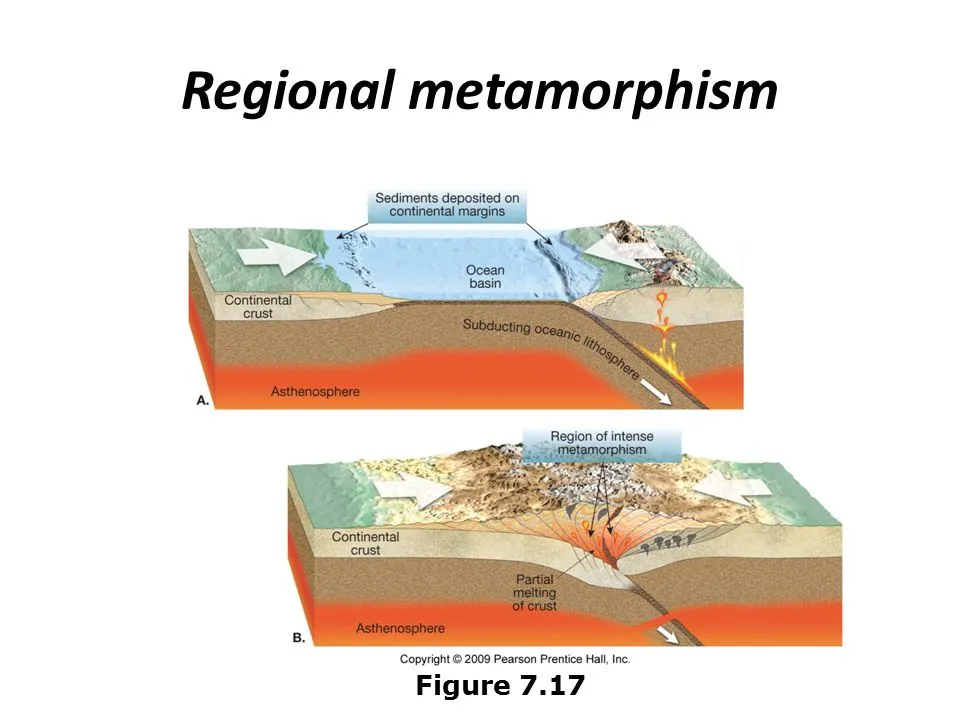Good afternoons steemians.
Today once again I am here to talk a little about what metamorphism is, its types, degrees and others. And I leave you this interesting topic below
METAMORPHIC ROCKS
Metamorphic rocks are formed from igneous, sedimentary rocks or even other metamorphic rocks. Therefore, all metamorphic rocks have a parent rock ie the rock from which they were formed.
Metamorphism
It is a process that causes changes in the mineralogy, the texture and, often, the chemical composition of the rocks, and takes place when the rocks undergo a physical or chemical environment different from their initial formation. And those factors that cause metamorphism are heat, pressure and the presence of chemically active fluids.
Metamorphism usually progresses incrementally, from slight changes (low grade metamorphism) to notable changes (high grade metamorphism).
Clearly there are different types of metamorphism, which are:
- Contact metamorphism: takes place when a magmatic mass instructs the rocks. Therefore, the predominant factor is heat.

- Hydrothermal metamorphism: involves chemical alterations produced as hot water rich in ions circulates through the cracks in the rocks. Although chemically active fluids predominate in this type of metamorphism, it is usually associated with igneous activity, which provides the necessary heat to cause chemical reactions and circulate these fluids through rocks.

- Dynamic metamorphism: this type of metamorphism, localized and of minor importance, can occur in the zones of geological faults, where the acting pressures -the only acting factor- can be so intense that they modify the rocks, producing new ones.

- Shock metamorphism: it is, like the previous one, less frequent than the first ones. It occurs when meteorites hit the Earth's surface. After the impact, the kinetic energy of the meteorite is transformed into heat energy and shock waves that cross the surrounding rocks. The result is the formation of a new rock.

- Regional metamorphism: it is the most important, since it produces the largest volume of metamorphic rocks. It occurs during mountain-forming processes (usually where the tectonic plates collide). In this type of metamorphism the three factors (heat, pressure and chemically active fluids) are equally important. The tremendous forces at play when the continents collide can crush and cook rocks in a large region, metamorphosing them into a wide area. Sometimes regional metamorphism can create rocks similar to those produced by contact metamorphism. But other times metamorphism is much more intense and creates eternally new rocks. The most extreme metamorphism creates its own unions of structures.

There are also degrees of metamorphism.

- Low grade.
Slate.
The mud rock is transformed into scaly gray slate by low grade regional metamorphism. High pressure and low temperatures realign minerals found in clay, such as mica and chlorite, in flat layers
phillite.
Like the blackboard, the phillite is created by the moderate regional metamorphism of the rock of mud or slate. But the effect is more intense: the mica flakes are larger and more visible and develop a silky shine as a mirror.
- Medium grade
schist.
Mid-grade metamorphism creates schist rock by making crystals of chlorite and mica in bands in the middle of others of quartz and feldspar. This grouping is called schistosity.
- High degree.
Gneiss.
Gneiss is formed with the highest degree of metamorphism. Extreme heat and pressure create a sparkling rock in which entirely new crystals form in dark and light wavy bands.

Foliation (Texture)
The metamorphosed rocks of mud rock and slate often carry wavy flat lines called foliation. Dark lines are created when the pressure flattens bands of laminar minerals, as it pits. Slate, phyllite, schist and gneiss have foliations like these. The metamorphosed rocks of limestone (marble), sandstone (quartzite), and coal (anthracite) do not have any of these foliations, and the glass interspersed grains do not show a specific pattern. This is called granular texture.

Folding
In the folds of gneiss, the separate bands of hornablenda and dark mica, and quartz and clear feldspar are visible. The crease is formed when rock-deformed by plate movements that are not as strong to alter the composition of the rock, as seen here in these folded bluffs of South Wales, UK.
